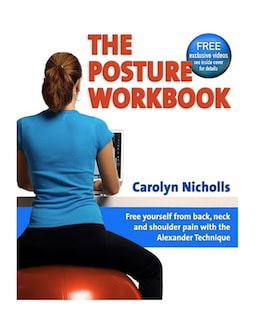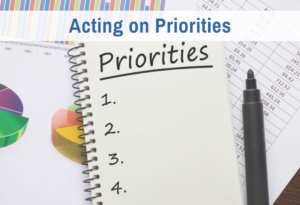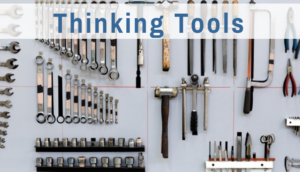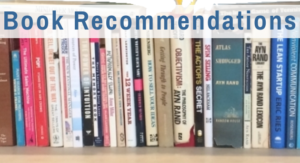Much chronic pain can be eliminated by better posture, but good posture cannot be forced. Rules such as “stand up straight” and “don’t slouch” can do more harm than good. Until it is fully automatized, a change in posture needs to be initiated and maintained throughout one’s day by conscious direction. For this, there is no substitute for the Alexander Technique.
Chronic pain brought me to the Alexander Technique (AT) in 1999. Due to apparent tendinitis in my forearms, I essentially stopped typing — for a year. I finally got the right physical therapy to mitigate it (the problem was in my neck rather than in my arms), but I still had to restrict my typing time. Using the Alexander Technique to improve my posture, I eliminated the typing pain and avoided carpal tunnel surgery. Since then, the method has aided me in my every physical endeavor. My AT teachers have become my go-to coaches for dealing with pain and movement issues. These days they are helping me to sleep and play tennis better.
I have long recommended the Alexander Technique while lamenting the scarcity of teachers. I learned the method in person, with “hands on,” and I couldn’t imagine that you could learn it any other way. It is a mental technique, in which you learn to observe and direct your own body. But there are relatively few teachers and they are concentrated in major cities with large populations of performance artists. Now, the need for an in-person teacher is lessened, so the method can be available to everyone — and The Posture Workbook by Carolyn Nicholls is an important part of that change.
What the book is
The book gives the best explanation that I’ve ever seen of the mental processes involved in AT. It ties all of the discussion to the current postural problems that are so prevalent now that “sitting up straight” is out of fashion and hovering over your computer or smartphone is in. It explains why the old rules of posture create problems and why those old rules cannot solve the pain problems of today. It shows the subtle differences between good posture and bad with carefully chosen photos, so you can train your own eye to see the difference. And it has a couple of dozen simple exercises, beautifully explained, which you can learn from the book.
In chapter 10, she explains “Your Postural Five-a-Day.” These are five simple exercises that she recommends you do every day to keep your body functioning well. Together they take less than 15 minutes. The first is the classic “active rest” that every AT student learns, and which I’ve been doing nearly daily for 25 years. She gives a 4-page explanation that was eye-opening to me and has improved my daily practice of this important process! I am adding the other four to my daily processes and they are already paying dividends for me.
The explanations in this book are so good that I feel confident to try them out without a teacher, and I believe that someone who didn’t know anything about AT could learn the basics from the book.
In addition, this book can fill a gap that I’ve seen with AT teachers. Not all teachers are good at explaining what you do mentally. They help you get to a better state during the lesson, but they don’t help you retrain your mind so that you can get yourself into that state without their help. Or they give woo-woo explanations that are hard to understand. But if you’re armed with Carolyn Nicholls’ book, you’ll have the conceptual approach you need to make the method your own.
This is what makes me hopeful that AT can reach a much larger audience. And that’s important, not just because a lot of people will feel better, but because a lot of people will use it to retake conscious control of their minds and bodies.
Why it’s important
Ayn Rand wrote, “If men identified introspectively their inner states one-tenth as correctly as they identify objective reality, we would be a race of ideal giants.” I believe that the body awareness that one learns through AT would be a major step toward creating that “race of ideal giants.”
With the method, you learn to identify excess tension in your body and undo it. This takes a different kind of observational power — an ability to look inside, to notice, differentiate, and monitor one’s own internal experiences.
This body awareness is needed for introspecting emotions accurately. If you are tense, you literally cannot identify subtle emotions. Emotions have a somatic component that is masked by tension. Repressed people can be picked out of a lineup just by noticing their patterns of body tension. An easy first step in de-repressing is to gain body awareness and learn to use your body better. (Of course, this will bring up new emotions. I have cried loudly during an Alexander lesson after a major physical release was accompanied by a sudden personal insight.)
Moreover, AT teaches a different kind of physical action — the opposite of habit — which Alexander calls inhibition and direction. (I explain what he means by these terms in my article on AT.) Inhibition and direction are volitional. By learning the method, you reinforce your power of choice — your agency within your own mind and your agency out in the world. This agency is critical to understanding your power over emotions. You never need to act on emotions. They can feel compelling, but when you have mastered volitional control over your body with AT, you have a model for how to manage emotions.
Finally, if you use AT to eliminate your pain, you will see that many problems that most people solve with pills and surgery can be solved much more effectively and pleasantly by your taking control of your own body. You see how your effort can create a virtuous cycle of mental growth. This is the method of self-development. I have used this kind of approach — which I learned first in my AT training — to develop all of the conceptual tactics I teach for elevating your productivity and happiness. It is this kind of process that puts your happiness under your long-term volitional control.
It is in part because I saw these connections that I have continued to take lessons in the technique for 25 years. I consider it part of my psychological training.
More live help is now available
The other reason I am so optimistic that a wider population can learn the Alexander Technique is the advent of lessons over the web thanks to everyone going online during the pandemic. I was a skeptic at first, but having had lessons with two different AT teachers via Zoom, I now see video lessons as the key to fully learning the technique.
During an in-person lesson, the teacher lightly touches the part of your body where there is excess tension and asks you to undo that tension. This “undoing” is relatively easy with a physical prompt, not so easy without. In a video lesson, it’s all up to you. The teacher can see the tension, and can tell you about it, and can give you accurate feedback regarding whether you’ve released it. But you need to experiment with sending directions to what you think are the right places. And you need to learn to talk more clearly about what you’re doing. Because of this, you get a much deeper understanding of the process.
In addition, taking video lessons means that you can get real-time advice doing daily life activities in situ rather than at a studio. I’ve had several lessons in writing longhand at my desk and typing at the keyboard. These lessons have eliminated stiffness and improved my tennis playing! They revealed to me that I needed a new desk and a different chair… Next up is flute lessons with my AT video teacher.
A video teacher can also help you get the most out of the exercises in Carolyn Nicholls’ book. After practicing head rotation (one of the 5-a-day) by myself, and getting positive results, I spent 40 minutes working through this exercise in a lesson with my teacher. This is only a 15-second exercise! Yet in that 40 minutes, I deepened my already pretty darn good understanding of “primary control” to such an extent that it has made a dramatic improvement in my body use after that one lesson. The book helped me grasp the basics and the video lesson helped me grasp the subtle issues that I would not have spotted myself.
The bottom line: I highly recommend this book. For everyone. Literally everyone.








Jean, have you read any of John Sarno’s books about chronic pain? What you describe in your earlier article about F.M. Alexander and his place in your life got me thinking- if I myself was choosing a second hero of my life, one tier down from Ayn Rand, it would be Dr. Sarno, for sure. I dealt with years of chronic pain that became debilitating, where I went straight from bed to floor and nowhere else. It is completely gone now, only because of reading Dr. Sarno’s ideas – the entirely mental change allowed me to use my body fully and joyfully. Now I feel confident I can continue all the physical aspects of my work and career, which are quite strenuous, but fulfilling and fun. Just like with Ayn Rand’s writing, my life would definitely be much less of a life if I had never found him.
I haven’t. Looks interesting. Thanks for the recommendation, Jenn.
I read Healing Back Pain. I found the thesis interesting–which I took to be that a lot of back pain is magnified by worrying about it. Especially if there is no structural problem, then stopping worrying about your back going out significantly improves your quality of life. This makes sense to me, in that when you are threat-oriented, you tense up, and tense muscles are main the source of the pain. So I can see how this could help you.
That said, I thought the explanations, especially the psychological explanations, were terrible. Completely misleading.
I also found that he was protesting too much of every other treatment method. He doesn’t understand why good posture matters and improves quality of life. Of course, he probably has the old view of posture. The Alexander Technique revolutionizes the concept of posture and, as I mentioned in my articles, is also extremely helpful as mental training.
Jean,
Rolfing is a type of deep tissue manipulation that aims to relieve tension. Proponents state that it reorganizes connective tissue, or fascia, resulting in health benefits.
I can say that i always felt better after a session,
Just another tool !
It may be worth a try!
All the best,howard jordan
Hi, Howard,
Yes, I’ve heard of Rolfing and other massage techniques that can be very helpful. What I find particularly special about the Alexander Technique is that once you learn it, you don’t need someone else’s help to detense. You can do it yourself.
I’ve taken lessons for years, but that is in large part due to my interest in psychology–and the fact I took up tennis very late in life, so I need to relearn body movement.
Cheers-
Jean